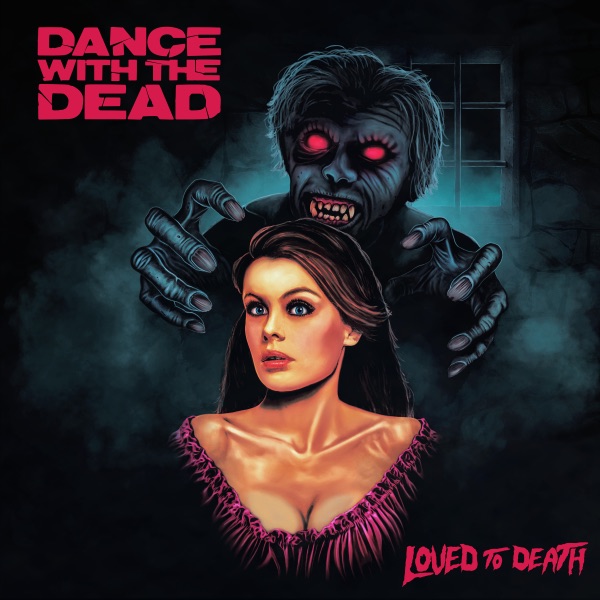Loved to Death, by Dance With the Dead
Suggested by Noli-Rose Nikitaki
In July 2016, Netflix released Stranger Things.
If you’ve not seen it, Stranger Things is a supernatural homage to Eighties horror films and novels. It has a Steven King and John Carpenter aesthetic at its core, bolsted with a respectful nostalgia, an excellent script, and an amazing ensemble cast of both plucky kids and broken adults. If you’ve not seen it, I’ve a question, and a command: Why have you not seen it? Go see it immediately.
Dance With The Dead are a synth metal duo out of Orange County, California. For the past eight years, they’ve been recording and releasing albums of delicious metal riffs bolstered with perfectly filtered Eighties Horror Synth backing. The songs are replete with influences of classic Carpenter cinema, and the sound is a flawlessly sculpted retro treat.
Loved to Death, their 2018 album, could be straight from the Stranger Things score.
The album starts with the pulsating Go!, with a biting snare and grinding synth soon backed by beefier drums and an Art of Noise style refrain. The music builds into a symphonic crescendo before pulling back with some tight guitar work, only to rise to an anthemic conclusion.
Moving through the following tracks, we see they’re all slight variations on this central conceit. Into the Shadows has a keytar feel, While Salem is more laid back and dreamy, like a Baywatch montage or similar beach flashback. Portraits has a more driven style, Creep brings the menace, while From Hell shakes out a more dancefloor vibe. My standout track, Become Wrath, has a Drum and Bass edge with an oppressive growling synth throughout.
Loved to Death feels like the score from a horror film, front and centre. Each song has pace and drive, and could easily accompany a moonlit chase scene where a masked assailant hunts down a busty blonde co-ed, or where a creeping supernatural evil devours an entire dancefloor of neon and spandex-clad back-combed twenty-somethings.
In a way, this cinematic style is a detriment. I miss a vocal element, but I concede that this would tarnish the artistic vision that’s on display. And while I can both appreciate and enjoy the music for what it is, what it is is something I’d not be replaying very often. It’s good, but it’s a little samey, and, dare I say it, a little boring after a while.
Nevertheless, I give Loved to Death a creditable 7/10. The album has a fantastic cover, and as a slice of Eighties cinematic horror kitsch, it more than fulfils its brief.
